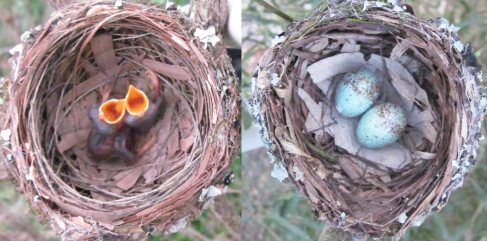Like many Australian passerines, Eastern Yellow Robins have a protracted breeding season. If conditions are right, nest building and egg laying may begin as early as July (which, for those of us in the southern hemisphere, is the middle of winter). This means that I am one very busy researcher right now!
Although I started my PhD just over a year and a half ago, I still feel new to many of the methods involved in studying woodland birds. Which means that everything is quite exciting, but also means… I am slow. Finding active robin nests requires a lot of patience. So far, my process is to arrive at a site and set out looking for a breeding pair. If I’m lucky enough to spot a bird quickly, I will follow it. Otherwise I follow calls, which are not always frequent. Often I resort to using a bit of playback (a recording of a robin call) to try and see who’s around. Once I have a target, I watch and listen and wait. And pretend very hard to not look like I am watching. The little robins seem to know when I am stalking them!
It seems to be working so far – as you can see from the pictures above. I am finding nests, and it is incredibly rewarding. The nests are quite tiny – an incubating robin barely fits on the nest. But they are adorable! I go back regularly to each nest to monitor its development, from eggs to hatching and then to check in as the chicks develop their feathers and get ready to fledge. The two little babies on the left are the cutest thing I have seen so far. Freshly hatched, I managed to catch them gaping at the camera – they must’ve thought I was bringing a tasty worm. Too cute!

